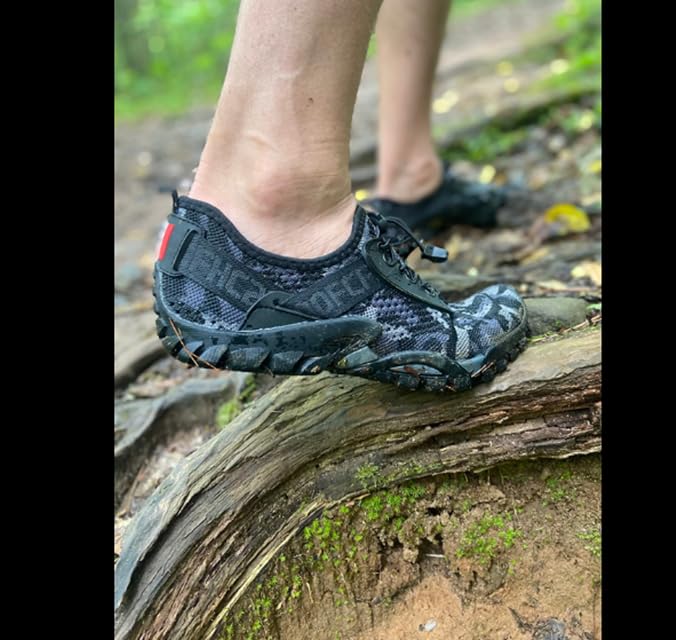The Design Principle of River-Tracing Shoes
Apart from the wavy fine lines on the sole to prevent slipping on moss in the water, there are six deep lines to enhance foot sole grip in water. Within these six deep lines, there are air-conditioning windows from the inside of the shoe compartment to the sole, ensuring effective water drainage.
Similarly, the soles and heels feature textures for anti-slip, along with air-conditioning windows designed for drainage.
Looking inside the shoe, one can see light directly from the air-conditioning window.
When purchasing river-tracking shoes, the included insoles are air-conditioned with holes, specially designed for river tracking.
To ensure quick moisture dissipation and rapid drying after landing, upstream shoes incorporate quick-drying fabrics and a perforated breathable design.
The upper material, including the thread used for stitching, is made of plastic fiber, offering resistance to pulling and corrosion.
A thickened anti-collision design on the toe prevents damage from rocks or hard objects in the water.
The shoelace length is precisely sufficient to avoid entanglement in aquatic plants without affecting forward speed.
Maintenance Instructions for Suxi Shoes
Avoid stepping on the fixed shoelaces under the soles when wearing river-tracing shoes to prevent deformation.
Refrain from wearing river-tracing shoes for intense sports like basketball or football; use dedicated sports shoes for such activities.
Avoid stepping on sharp objects during hikes, prolonged water exposure, or extended sun exposure to prevent discoloration, deformation, and accelerated aging.
Do not lend shoes to individuals with larger feet.
Avoid contact with chemicals and clean promptly if exposed; chemical stains or seawater exposure can lead to discoloration and deformation.
Clean shoes regularly, using water to rinse and drying with a rag in a ventilated place to prevent odor and bacterial growth. Repair any shoe body damage promptly.
Store shoes in a cool, dry place when not in use to prevent sun exposure that may affect material flexibility and longevity.
Optionally, place desiccant in the shoes to maintain freshness.
Differences Between River-Tracing Shoes and Sandals
- Different Types of Shoes
Sandals expose the toes and are mainly worn barefoot, while river-tracing shoes are a specific type and style of sports shoes.
- Different Applicable Occasions
Sandals are unsuitable for solemn occasions, running sports, and driving vehicles, mainly suited for leisure. River-tracing shoes are designed for outdoor wading and sand activities, often transitioning between water and land.
- Different Materials and Functions
Sandals are made from materials like soft rubber, artificial leather, cowhide, pigskin, etc., evolved from the original wrap. River-tracing shoes predominantly use breathable PU and large mesh mesh for better drainage, suitable for outdoor activities with enhanced climbing characteristics.

